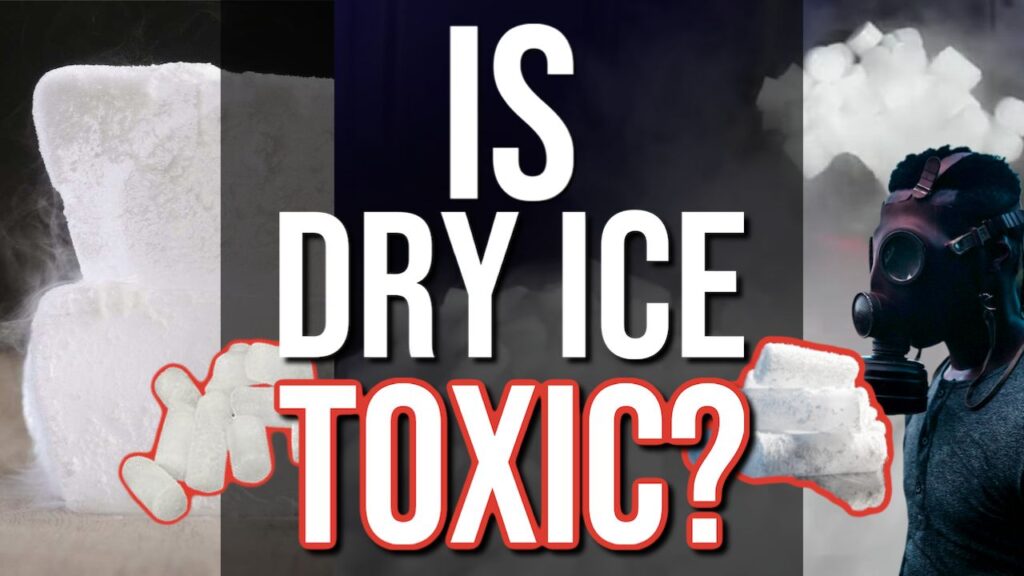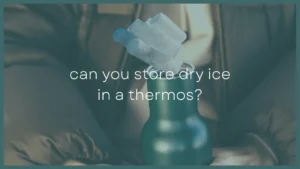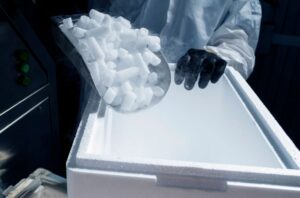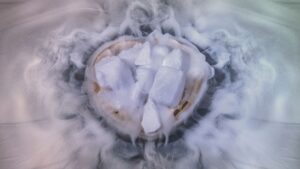Dry ice, or frozen carbon dioxide, is commonly used in cold food storage, for cold deliveries and in making halloween fog. But if you don't know much about dry ice you might be wondering about whether or not it's toxic or poisonous and how to use it safely.
Dry ice gas is not toxic or poisonous in small quantities and it can safely touch food. In large quantities it can displace oxygen in the air causing headaches, nausea and asphyxiation. Ensure good ventilation when using dry ice and wear protective clothing as it's cold temperature can burn skin.
In this article we'll look in more detail about how frozen carbon dioxide, known as dry ice, affects us as humans. Does it pose any sort of risk and what can we do to ensure we remain safe when using dry ice.
Is Dry Ice Toxic or Poisonous?

Dry ice is made almost entirely of carbon dioxide, which in small quantities is not toxic or poisonous to humans.
At room temperature it sublimates (turns directly from a solid into a gas) releasing carbon dioxide into the air. Is this dry ice gas poisonous?
Carbon dioxide appears naturally in the air we breath (0.04% of air is CO2) and carbon dioxide is commonly dissolved into in soda, beer and other drinks to give it's fizz.
Carbon dioxide is NOT listed on ACS's list of known or probable carcinogens and serves important physiological functions in humans.
However, like all things in large quantities the carbon dioxide gas that dry ice emits can be dangerous and even fatal to humans. The main danger of dry ice is asphyxiation.
This is when there is so much carbon dioxide in the air that it displaces oxygen. Humans need to breathe oxygen so when there is a lack of oxygen it can lead to harmful effects like headaches, confusion, disorientation and in the worst cases even death.
There was a case of an elderly woman who died due to being in an enclosed vehicle with dry ice as well as 3 people dying in a pool party accident in Moscow.
However, as long as you have good ventilation when using dry ice the chances of asphyxiation is extremely low.
According to NJHealth the workplace exposure limits for carbon dioxide is 5,000 ppm (0.5% of the air) averaged over an 8-hour workshift and 30,00 ppm (3% of the air) should not be exceeded for more than 15 minutes.
When having dry ice in an enclosed space (eg. a vehicle or room) it's very important to allow ventilation into that room. Open windows and doors to ensure the carbon dioxide gas can escape and levels don't get too high.
Is It Safe To Breathe Dry Ice? Can Breathing It Hurt You?
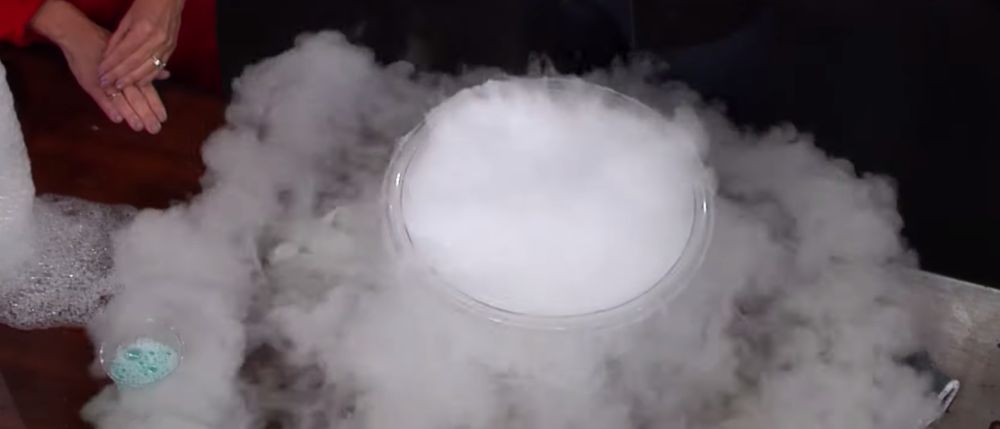
If you've ever seen or handled dry ice you'll notice a slight fog or smoke coming off the dry ice.
Place dry ice in a bowl of warm water and this will speed up the process and you'll see a thick fog on top of the water that can also fall down to the floor and float on the floor.
It's usually safe to breathe some dry ice fog from halloween drinks or fog machines, however large quantities of dry ice gas can displace oxygen in the air and cause major issues like headaches, disorientation and asphyxiation.
What you see in the fog is actually condensed water vapor, much like clouds in the sky. You're not seeing the carbon dioxide coming off the dry ice as that is an invisible gas.
Instead the cold dry ice causes the water droplets in the air to condense into fog. It then sinks to the ground because it's colder and denser than regular air.
In stage shows and at halloween dry ice is placed in water to create a cool smoke/fog effect that doesn't rise but rather floats along the ground.
Is It Safe To Eat Dry Ice?
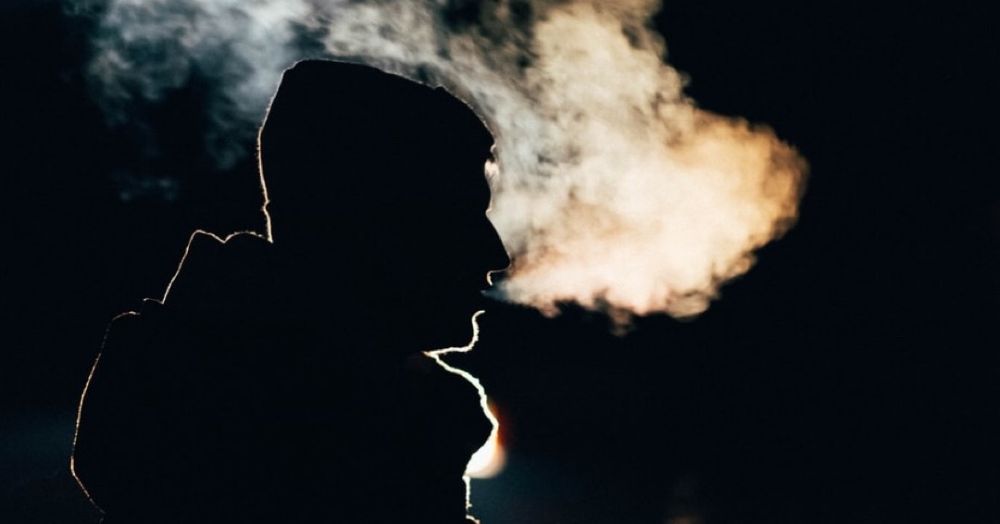
While dry ice is made from carbon dioxide which isn't considered toxic, due to it's temperature it is not safe to eat dry ice.
Under no circumstances is it safe to eat dry ice. It is too cold and will burn you mouth, esophagus and stomach if consumed. The expanding gas can also potentially rupture your stomach or cause internal bleeding.
If you've eaten dry ice you should seek medical attention immediately. Call an ambulance or go to a hospital.
Is It Safe To Drink Drinks With Dry Ice In Them?

You may have seen people put cubes of dry ice into drinks which makes them bubble and create a fog effect on top of the drink. But is it harmful to drink drinks with dry ice in them?
Drinks with dry ice in them are safe to drink. Some CO2 will dissolve into the drink making it fizzy but this is not toxic and it will not poison you. Do NOT swallow the dry ice cube at the bottom of the drink as it's so cold it can burn your esophagus and stomach.
People drink soda and beer every single day. These drinks have carbon dioxide dissolved in them which gives them their fizzy nature.
Adding dry ice to a drink is doing much of the same thing. At the dry ice melts in the drink it turns directly into a gas which bubbles to the surface and creates a fog on top of the drink.
The fog is actually condensed water vapor from the air, much like a cloud. You can't actually see the carbon dioxide gas the dry ice emits. It's invisible.
But it's so cold it condenses the air above the drink making it foggy. It's fine to breathe in small amount of this but don't intentionally inhale a lot as this can cause health issues.
The biggest danger with dry ice in drinks is the ice cubes themselves. Never EVER swallow the dry ice as it's so cold it'll burn not only your mouth but esophagus and stomach and can cause major issues.
Make sure all guests are aware NOT to consume chunks of dry ice and don't give dry ice drinks to children.
Is It Safe For Dry Ice To Touch Food? Is Dry Ice Toxic To Food?
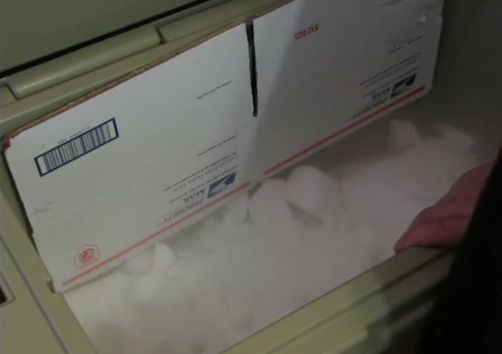
Dry ice is often used in deliveries or food storage in order to keep food frozen and stop it from spoiling. But if dry ice touches the food is it still safe to eat that food or will the dry ice make the food toxic?
It is safe for dry ice to touch food as long as it is food grade. It will freeze the food upon contact but it isn't toxic. Non food grade dry ice shouldn't come in contact with food.
When food grade dry ice is made the carbon dioxide first goes through a purifying process where impurities are removed from the substance leaving nearly pure carbon dioxide.
In the places where dry ice is sold they should clearly state whether or not the dry ice is food grade and most supermarkets or big box retailers like Walmart sell food grade dry ice.
What Happens If You Drink Dry Ice Water?
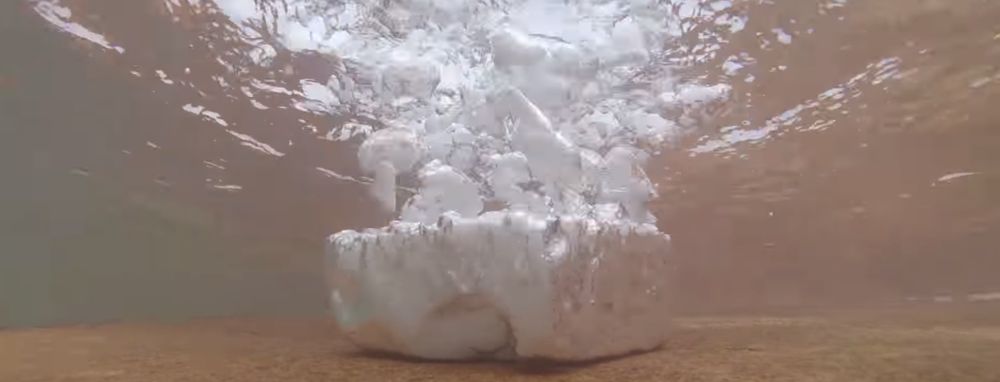
If you place dry ice in water then the dry ice will create bubbles in the water and a fog will appear on top of the water.
This is great for creating fog for stage shows, parties or at halloween for a spooky effect.
But what if you were to actually drink the dry ice water? Would this be bad for you?
Drinking water with dry ice is it is safe and non-toxic. The water will taste carbonated and maybe slightly bitter but it poses no health risks. Do not swallow dry ice cubes as this is dangerous.
Is Dry Ice Toxic To Dogs?

If you're using dry ice to create a smoke effect at a party then you do need to be careful about your 4 legged friends.
Dry ice fog can be toxic to dogs and cats. Because the cold CO2 sinks the levels near the ground can be dangerously high if breathed in large quantities. This can lead to headaches, disorientation and asphyxiation in both humans, dogs and cats. Eating dry ice is very dangerous for all animals.
Because animals are closer to the ground where CO2 levels are much higher the chances of them breathing higher quantities of CO2 (and getting less oxygen) is higher. The chances this will cause issues is still low, but I personally wouldn't take any chances here.
So if you're making smoke or fog using dry ice make sure it's in a well ventilated space or keep your animals away from it in order to keep them safe.
What If Your Dog/Cat Licks Dry Ice?
If your dog or cat was to lick dry ice then it is likely their tongue will burn. Dry ice is so cold that it can quickly burn skin and because a tongue is wet it burns the skin faster than when it's dry.
If you suspect your pet has licked dry ice and is suffering from burns then you should take them to the vet to be treated.
What Happens If You Breathe Dry Ice Smoke?
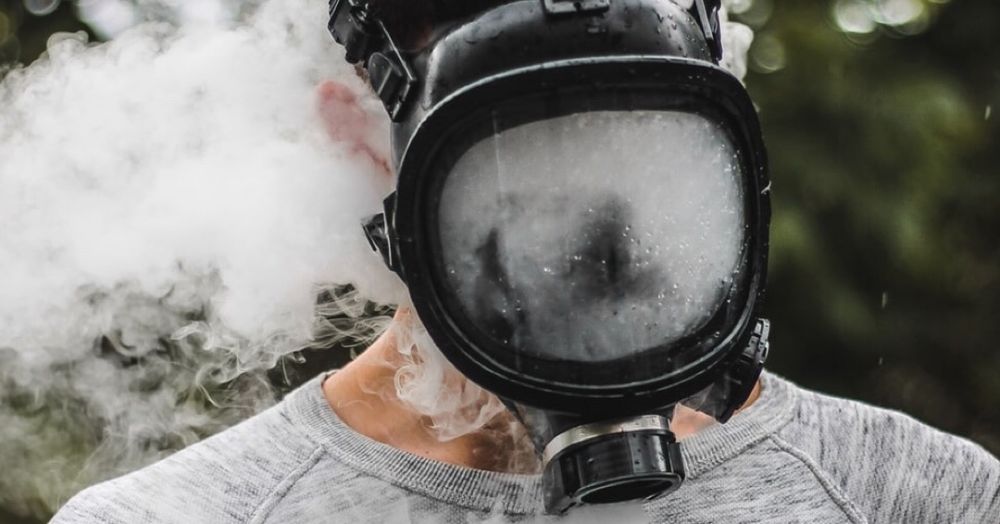
The “smoke” from dry ice is actually just condensed water vapor – much like a cloud. However, it does also contain invisible carbon dioxide gas.
What happens if you breathe in dry ice smoke? Is it dangerous?
Breathing small amounts of dry ice smoke is not dangerous. The smoke is mostly condensed water vapor but it does contain high levels of CO2. Long exposure to large quantities of dry ice smoke can cause health issues like headaches, disorientation and asphyxiation.
You should not intentionally breathe large amounts of dry ice smoke, but in small amounts it's usually fine.
When handling dry ice always ensure you are in a well ventilated area. The major risk of dry ice smoke is in non-ventilated areas the CO2 can displace oxygen causing asphyixation.
This is when there isn't enough oxygen in the air and your body doesn't get enough oxygen to function. When disposing of dry ice it's best to do it outdoors where the wind can blow away the CO2 gas.

